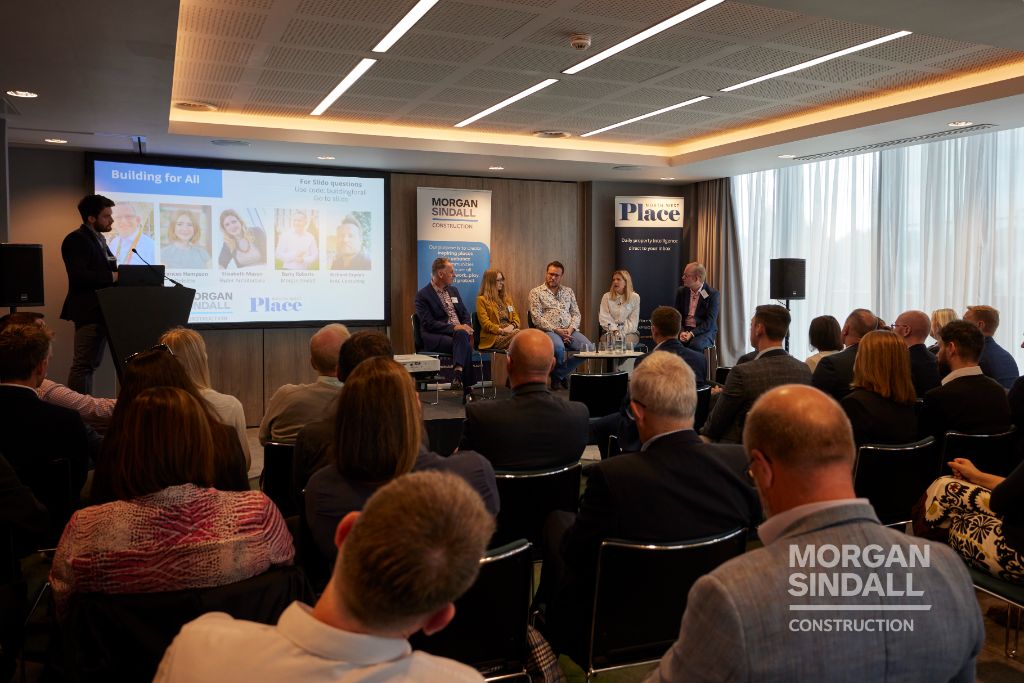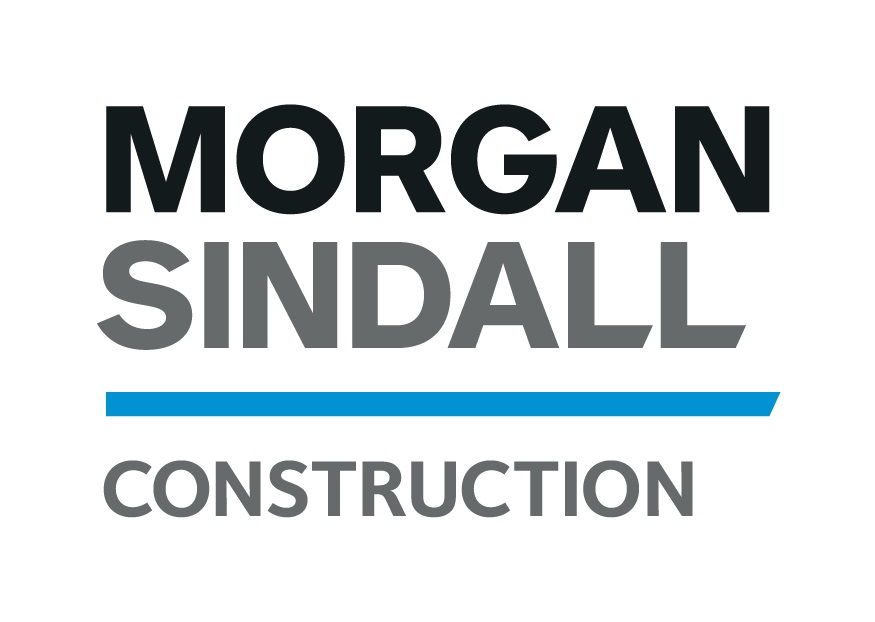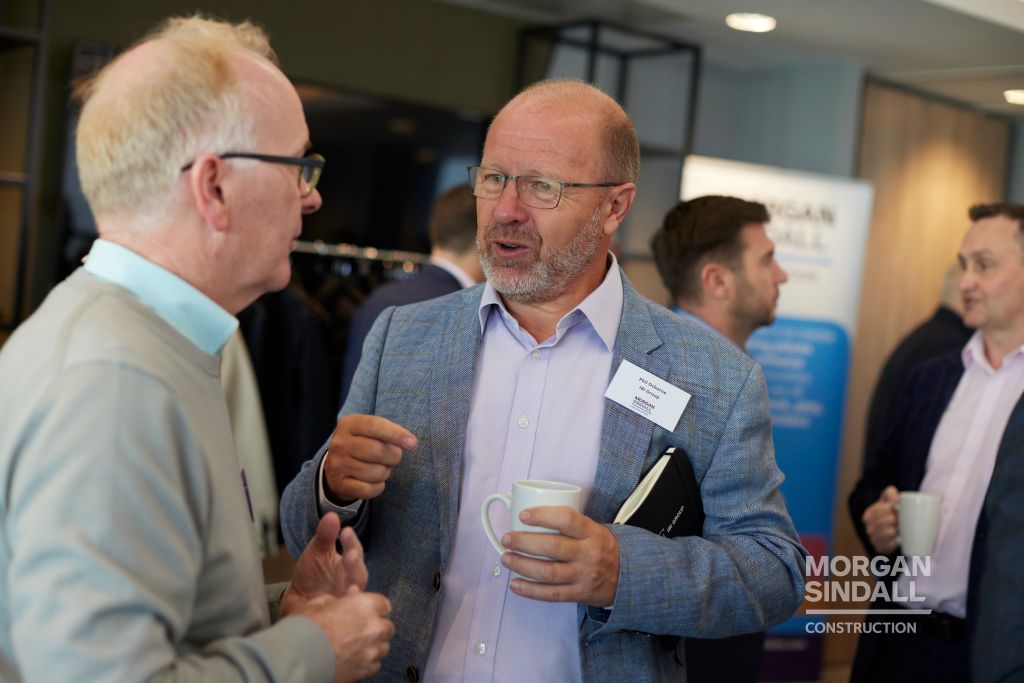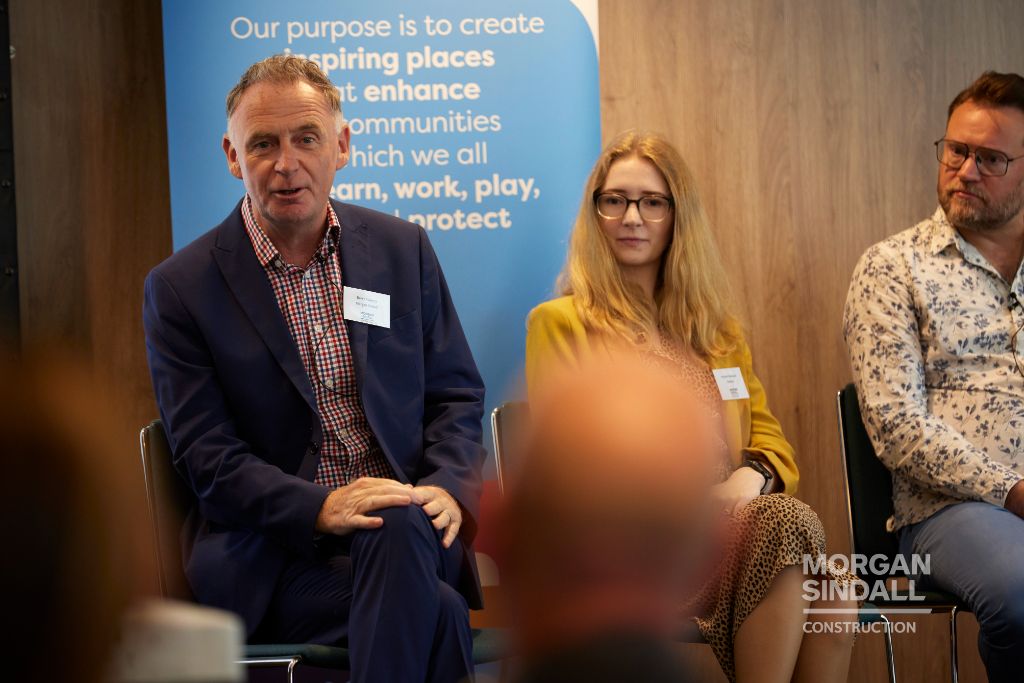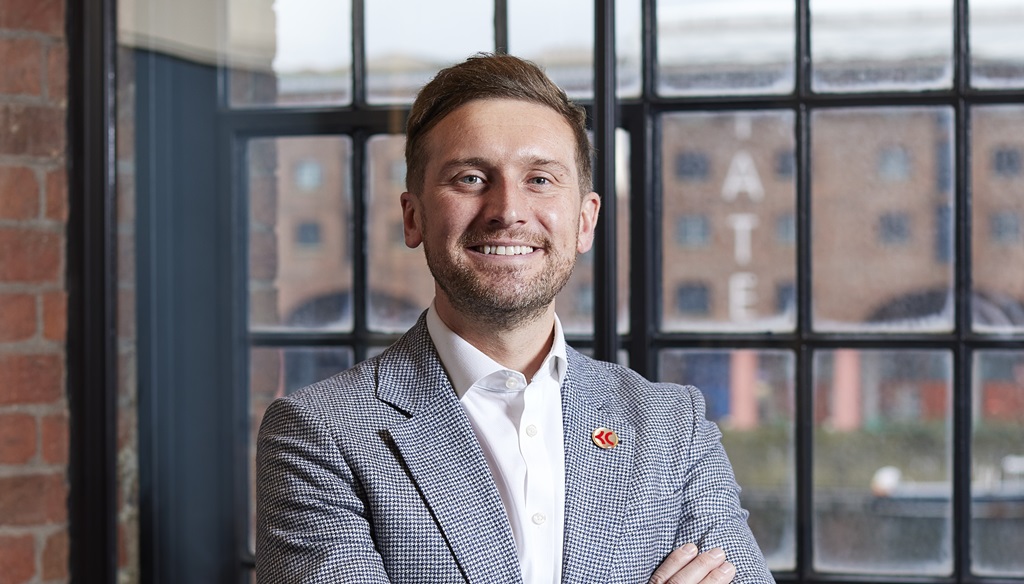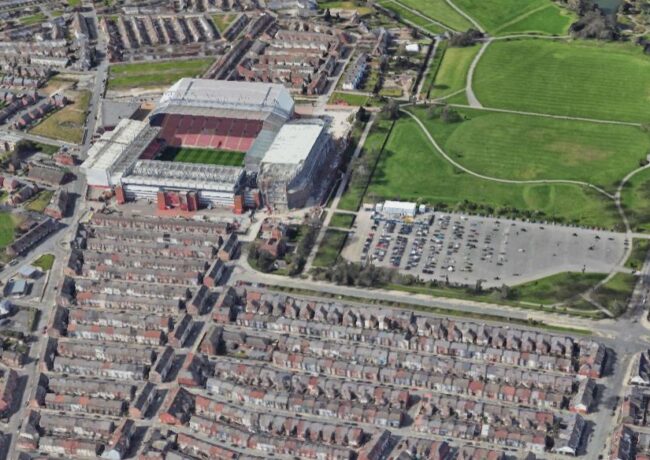Event Summary
Building for All | Photos and summary
While great strides have been made in improving the accessibility of the built environment and the places it creates, there is still much work to be done.
That was the consensus at the Place North West’s Building for All breakfast event, held in association with Morgan Sindall Construction.
Held on 21 September at the Novotel Liverpool Paddington Village hotel, Building for All brought together a panel of experts and leaders in the built environment to discuss how the industry can be more inclusive. The event was hosted by Place North West senior reporter Dan Whelan.
Here are the key talking points from the discussion.
Scroll down to see photos and slides from the event.
Hidden disabilities need to be considered
The event began with a presentation from Steve Dering, operations director at Direct Access, a firm that specializes in ensuring schemes are as accessible as possible.
There are some parts of accessibility that the built environment already does well, according to Dering.
“Architects generally, in our experience, are great about thinking about accessibility in terms of physical aspects,” he said. These include ensuring doorways are wide enough for wheelchairs, or that there are step-free aspects.
But it is when it comes to dealing with hidden disabilities that some buildings fall short.
Dering noted that the largest group of those with a disability have one that you may not see readily. He counted himself in that number. Steve is deaf and said that if it wasn’t for his cochlear implant, no one would know he was deaf until they tried to speak to him.
Neurodiversity, including autism, falls under the hidden disability category.
These hidden disabilities need to be considered individually when it comes to designing a space, Dering said, describing the issue as “critically important”.
He explained: “Someone with a visual impairment might rely on audio information but someone who is neurodiverse may struggle with the overwhelming stimulation of too much noise.”
Dering gave examples of ways to help make spaces more accessible, including ensuring that there are clear sightlines in a building (“this gives people the confidence to go into the next part of the building”) and conducting a thorough and comprehensive wayfinding exercise.
He also praised the inclusion of calm spaces in office buildings and stadiums. These are areas that those who struggle with overstimulation can go to for a few minutes and regroup. Having these spaces can also help the built environment’s workforce more diverse.
“If we think about and include disabled people from the outset [of design], we will create the employment opportunities that disabled people really want because have an office environment that caters to their access needs,” he said.
Progress has been made
In the panel discussion, Barry Roberts, managing director at Morgan Sindall Construction North West, spoke about how the industry has changed since he started work in 1983.
“I think massive strides and improvements have been made in all aspects of the industry – not just from a design perspective, but in terms of attitudes, cultures and behaviours,” Roberts said. “There’s a kind of understanding of the issues. But we have still got a long way to go.”
He referenced how building sites when he started were largely male-dominated places where accessibility wasn’t even considered when it came to site cabins.
Flash forward to last year. During Morgan Sindall’s work on The Spine in Liverpool, the company wanted to open the site up for visits and tours from schools. So, Morgan Sindall incorporated a lift into its cabin designs so that people could access these cabins easily.
Roberts got to see first-hand the impact this had.
“One of the students, who was a wheelchair user, was almost in tears,” Roberts recalled. “She said ‘I’m normally excluded from visits like this’.
“On that particular date, she was really pleased that people had actually made an effort to consider her particular disability,” he said.
While this was good news on this occasion, he later added it simply is not enough towards making the industry accessible.
“We could talk all day about pockets of excellence, but things are not moving quick enough as an industry and we need to do more,” he said.
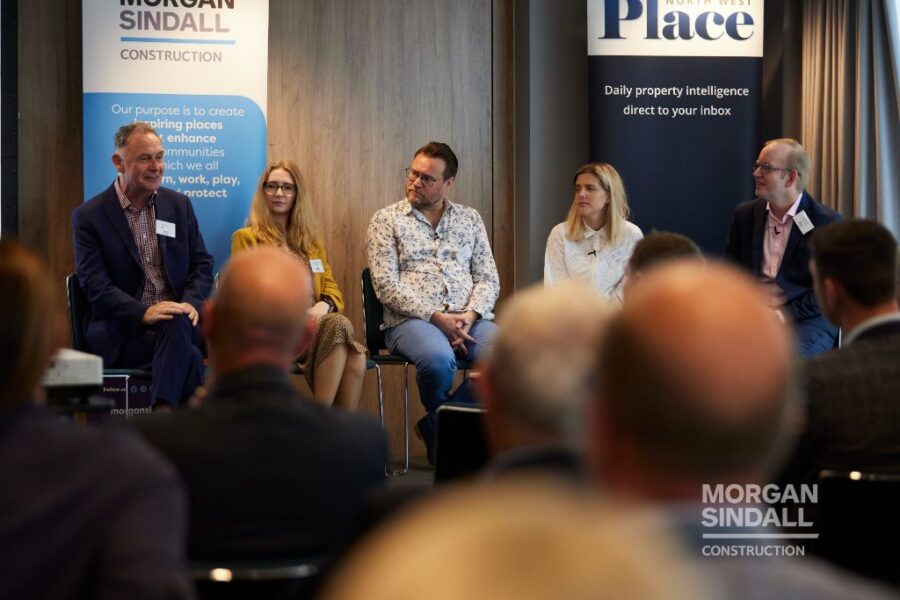
Morgan Sindall’s Barry Roberts, Deloitte’s Frances Hampson, MAC Consulting’s Richard Dryden, Ryder Architecture’s Elizabeth Mason, and Direct Access’s Steve Dering. Credit: PNW
Accessibility must be part of the discussion early on
When accessibility is considered in a scheme, it is often too late in the process, according to Elizabeth Mason, senior architect at Ryder Architecture.
“It needs to be thought about from the very beginning,” she said.
Richard Dryden, a director at MAC Consulting specialising in disability and inclusion, agreed.
“The earlier, the better,” he said. “Quite often we are brought in quite late in RIBA Stage 3, and then we are seen as the bad guy because all we are doing is enforcing changing the design because things have not been done right, done correctly.
“It is not going to cost any more to bring somebody like us in earlier – you’re just going to get it done right the first time and that will save cost in the redesign.”
Frances Hampson, associate director at Deloitte, echoed those sentiments.
“When I look at the built environment as I go around today, there are loads of little things where you think that [a developer] could have just done that a little bit better if they had just thought about it sooner rather than trying to retrofit [the design] to try and meet the regs.”
Mason did say that there was a change on this front though, referencing RIBA’s efforts to include accessibility in all stages of design.
“I think this was only from 2020, so it has not been properly implemented in all buildings yet,” she said. “It will be interesting to see how that helps the process.”
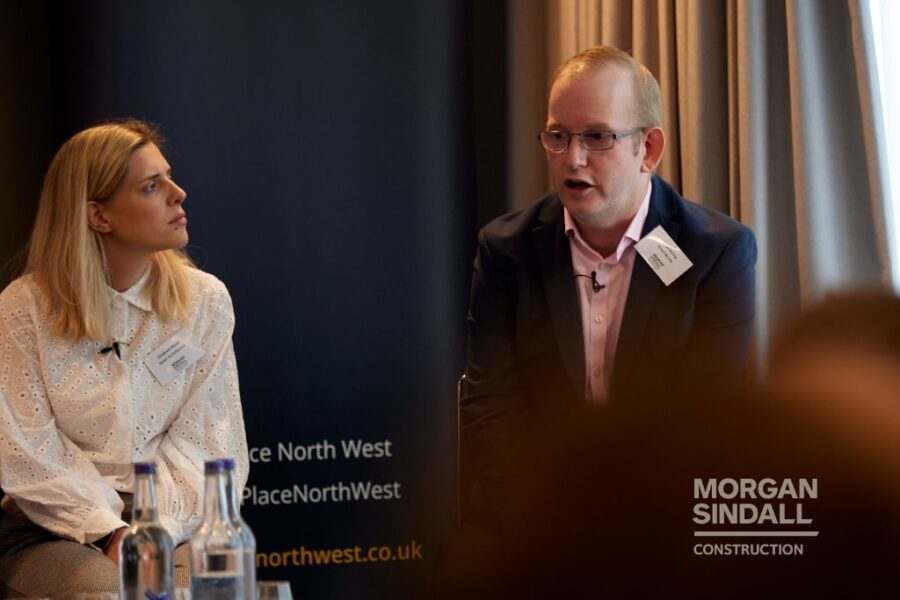
Providing more information about a building’s accessibility options can make a huge difference to those with disabilities, according to Steve Dering. Credit: PNW
Change is possible
Making buildings and the industry more accessible does not have to involve big sweeping changes, according to Dering. Colours and finishes can be tweaked to help those with disabilities or those who are neurodiverse.
There’s also one tiny change that can make a big difference.
“Definitely the most powerful thing anyone can do is provide information,” Dering said. “Disabled people tend to spend a lot of time researching about a new place: How they get there? Can they park? What accessibility features are there?
“Providing information about your venue and the level of accessibility gives people the power,” Dering said.
People can then make the right decision for themselves on whether or not they wish to go to a place and if they want to handle whatever obstacles there may be.
Another key change involves reaching out to others early on.
“The more people you consult, the more of these circumstances you will come across and people will be able to input into the design,” Mason said. This can lead to more accessible schemes.
Education is another key thing the industry can work on.
“You’ve got to change attitudes and behaviour,” Roberts said. “If you can educate people to see what the benefits of providing great buildings for people who are neurodiverse, then clients will potentially want to make their built environment accessible because they’ll get a benefit from the employment.”
The government has a role to play as well, with panellists agreeing that there needs to be more pressure from the central government to ensure buildings are accessible.

Frances Hampson discussed the importance of ensuring young people know that the built environment has career paths for those with disabilities. Credit: PNW
The workforce needs to be more diverse
“If we have more people with different types of disability in the built environment workforce, I think [changes] will just filter through,” Hampson said.
“We need to start in school, helping people know that they come into this environment and it is a safe space where you can have a successful career.”
Part of that starts with having an accessible office environment. That first impression can mean a lot for someone coming to interview for a role.
“That means getting access to a floor with the full experience of what it feels like to be employed at that place,” Dryden said. “That you can get to know the people, get to navigate the building, and know that you’re going to be included and not excluded.”
That is something Hampson, who has a hidden disability, considered when she joined Deloitte.
“One of the things I was looking at was do I feel comfortable here? Do I feel like this is a place I can actually bring my full self to at this workplace?” she recalled. Deloitte gave her an environment that met those needs.
The panel agreed that when more diverse voices are brought into projects and the workforce, the result is a win for everyone.
Slides
The next Place North West conference is Place RESI, which is being held on 13 October at the Science and Industry Museum in Manchester. Tickets for this in-person event are currently available.
Click any image to launch gallery


